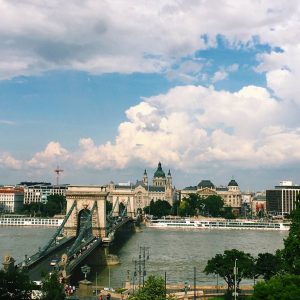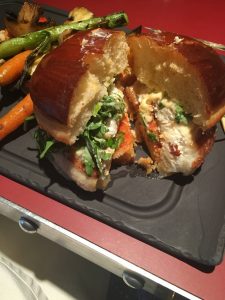
Hello (Szia) from Budapest, Hungary! In a few days, I will start my internship with the European Roma Rights Centre, where I will be working with the legal team and doing research on anti-Roma discrimination. But for now, I am busy exploring the city and getting acclimated to my temporary home. As I wrote in April (and as Princeton’s IIP program suggested), interning abroad can be thought of as a comprehensive research experience — a time to collect “data” on our surrounding environments. Fellow PCUR blogger Vidushi gave similar advice during her study abroad experience in New Zealand, where she talked about taking courses relevant to New Zealand culture. Following everyone’s “immerse-yourself-in-the-culture” suggestion, I used my first few days in Budapest to do some informal “research” on the city.
First and foremost, I tried to familiarize myself with Budapest by exploring my immediate neighborhood. Not-so-fun fact: I’m hopelessly directionally challenged. So getting to know my surroundings was especially important for me. And while exploring is a practical necessity, it’s also a great way to observe how the city is organized. For instance, I was fascinated by the city’s layout — particularly how it revolves around the Danube River, which divides the city into the Buda and Pest regions.

And of course, walking around the city presents countless opportunities for people-watching, which helps explain everyday customs that might be hard to learn from a book. Books also can’t tell you how things taste — so you should take advantage of the opportunity to try local food! The amount of Hungarian food I’ve consumed in the last few days is slightly concerning given that the dishes are HUGE and primarily consist of heavy carbs, meat and cheese. I’m currently looking for other (healthier) ways to immerse myself in local culture.
I also spent time visiting museums and learning about the history of Budapest. I bought one of those sightseeing packages (bus tour, walking tour, boat ride, museum tickets, complimentary maps and souvenir shop coupons, etc.) that overly eager tour guides try to sell to vacationers on the street. While this made me feel like the ultimate tourist—which, I guess I am—I’m glad that I took the time to learn about Budapest’s past. Among many other things, I learned that Budapest is home to both the second largest synagogue in the world and the northernmost holy place of Islam!
While I don’t know exactly what I’ll be researching yet, I believe that recognizing the prominence of diverse religions, ethnicities, and cultures in the city will inform my research of the Roma community that lives there. Whether you are studying, researching or interning abroad, knowledge of your environment’s past and present will certainly contextualize and enhance your work.
–Emma Kaeser, Social Sciences Correspondent

